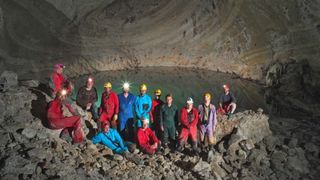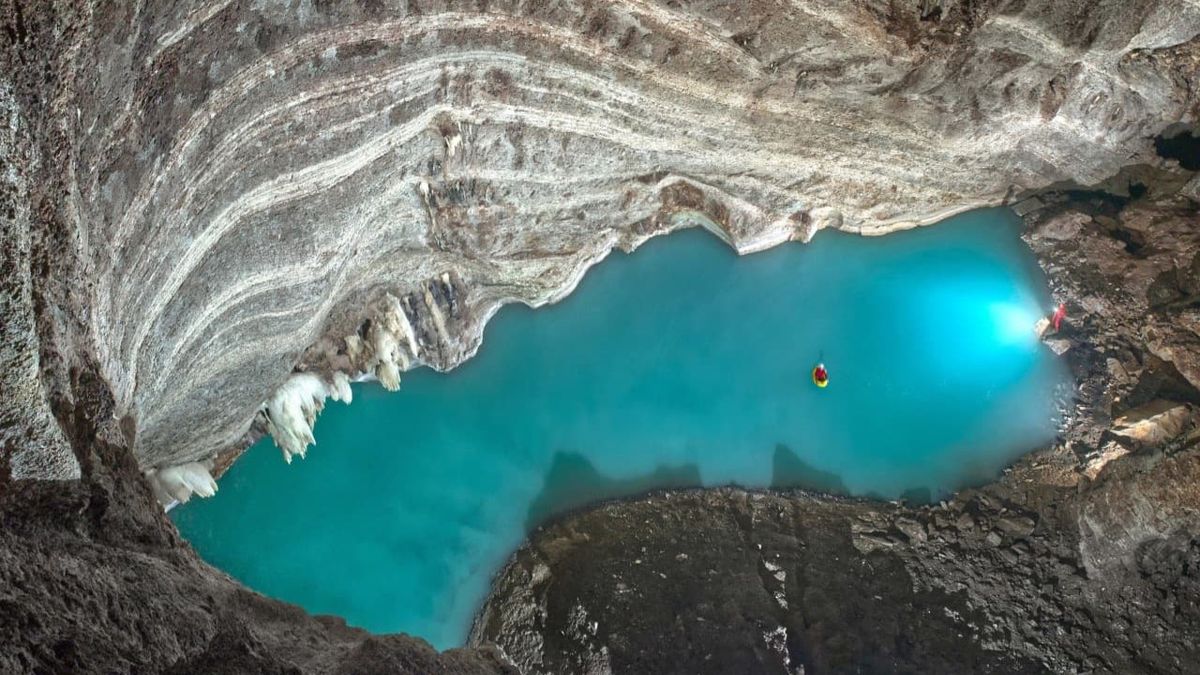Scientists have discovered the world’s largest underground thermal lake in a cave in southern Albania, the results of a new expedition confirm.
Researchers from the Czech Republic first found the lake four years ago, but they did not have the right instruments to measure it at the time, according to a translated statement from the Neuron Foundation — an organization that promotes research by Czech scientists.
Now, the team has announced it returned to the lake in 2024 with state-of-the-art 3D scanners, confirming that the hidden water body is the biggest of its kind known to science.
The scientists named the lake “Neuron” after the foundation, which funded the recent expedition. The lake measures 454 feet (138 meters) long and 138 feet (42 m) wide.
“In order for Czech science to present this phenomenal discovery, it was necessary to conduct scientific research and precise measurements,” Marek Audy, a cave explorer who led both expeditions, said in the statement.
Related: Scientists discover enormous reservoir hidden in Cascades — more than twice the amount of water in Lake Mead
Audy and his colleagues first discovered the hidden chamber while exploring the border region between Albania and Greece, which has been subject to political tensions for over a century and therefore been off limits for some research.
While exploring the region around the town of Leskovik in Albania, the team spotted a huge column of steam wafting from a mountain range and, upon closer inspection, saw it was rising from an abyss more than 330 feet (100 m) deep, Audy said.
The researchers descended into the pit and found an extensive system of caves, including some with thermal springs and one containing a vast lake, Audy said.
“During our initial exploration, we created a basic map using our equipment and immediately realized that we had discovered something extraordinary,” photographer and expedition member Richard Bouda told Euronews.

Last year, with funding from the Neuron Foundation, the researchers returned to the site with a lidar scanner — a remote-sensing instrument that uses a laser to measure distances and create 3D models — to map the lake in detail. The results indicate that the lake holds 294,350 cubic feet (8,335 cubic meters) of water, equivalent to about 3.5 Olympic swimming pools.
Audy told National Geographic CZ they hope to return to Lake Neuron to study it further. “It’s something that could have a huge impact on understanding underground ecosystems and geological processes,” he said. “We want to look at other parts of the cave, learn more about the geology and biology of this area.”
Researchers previously found a similar, albeit smaller underground thermal lake in Hungary, Reuters reported in 2008. That lake and its chamber, discovered beneath Turkish baths in the capital city of Bucharest, were “the biggest active, water-filled thermal water cave and hall in the world” at the time they were found, cave explorer Sandor Kalinovits, one of the lake’s discoverers, reportedly said.
